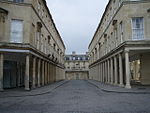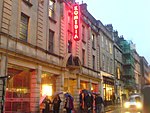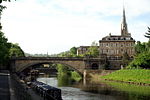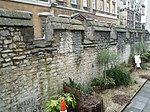Cross Bath
1789 establishments in EnglandAncient Roman bathsGrade I listed buildings in Bath, SomersetInfrastructure completed in 1789Mary of Modena ... and 5 more
Public baths in the United KingdomRoman religious sites in EnglandRoman town of BathSpa watersTourist attractions in Bath, Somerset
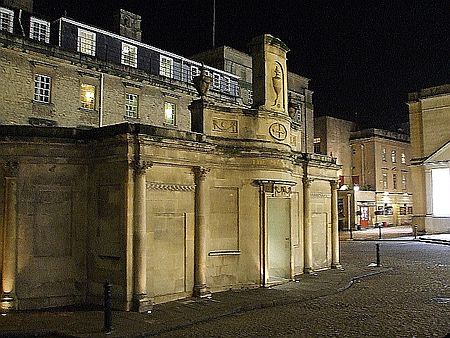
The Cross Bath in Bath Street, Bath, Somerset, England is a historic pool for bathing. The surrounding structure of the pool was built, in the style of Robert Adam by Thomas Baldwin by 1784 and remodelled by John Palmer in 1789. It is recorded in the National Heritage List for England as a designated Grade I listed building, and was restored during the 1990s by Donald Insall Associates.
Excerpt from the Wikipedia article Cross Bath (License: CC BY-SA 3.0, Authors, Images).Cross Bath
Stall Street, Bath Kingsmead
Geographical coordinates (GPS) Address Website Nearby Places Show on map
Geographical coordinates (GPS)
| Latitude | Longitude |
|---|---|
| N 51.381111111111 ° | E -2.3613888888889 ° |
Address
Primark
Stall Street 38-39
BA1 1QH Bath, Kingsmead
England, United Kingdom
Open on Google Maps
